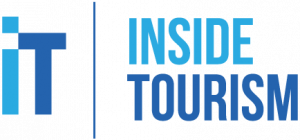Greater Wellington Regional Council plans to improve the region’s rail network with new longer distance rolling stock upgrading the Wairarapa and Capital Connection fleets are underway.
Council agreed to endorse a proposed plan which would also provide capacity for supplementing peak demand on both the Hutt Valley and Kapiti Lines, at a Sustainable Transport Committee Meeting on Thursday.
Greater Wellington sustainable Transport Committee chair Barbara Donaldson says the biggest issue facing our region’s rail network is providing sufficient capacity to meet future demand.
"Our rail network reached a new annual patronage high of 14.3 million passengers in June 2019, representing an increase of 5.7 per cent year on year.
"The peak patronage rates were even higher, rising 7.3 per cent year-to-date, with our busiest lines being Hutt Valley and Kapiti."
Trains running longer distance services between Wellington and Masterton and Wellington and Palmerston North require refurbishments or replacements and patronage growth on these services has already exceeded the available capacity for both fleets.
"The increase in train-users both within and beyond the metro network shows an urgent need to plan and fund a fleet solution that avoids capacity shortages across the whole network as early as the mid-2020s," Barbara says.
The case proposes to replace both fleets with fifteen four-car Dual Mode Multiple Units which will run on electricity from overhead power wires, switching to alternative energy sources north of Waikanae and Upper Hutt.
"These modern rail services will improve customer experience and allow an increase in service frequency on the Wairarapa and Manawatu corridors.
"The additional capacity will provide a boost to peak services on the Kapiti and Hutt Lines which alone provide transport for 84 per cent of our rail customers."
The delivery of the new rolling stock and associated network improvements requires a capital investment of $415 million and has a conservative benefit cost ratio range of 1.3 to 2.6. The earliest date for the first of the new trains being put into service is 2025.
"Greater Wellington is keen to work with stakeholders to map out a solution to fund and deliver these essential services for the future," says Barbara.
The funding proposal will now go to regional and rail stakeholders and the New Zealand Transport Agency for consideration and feedback.


